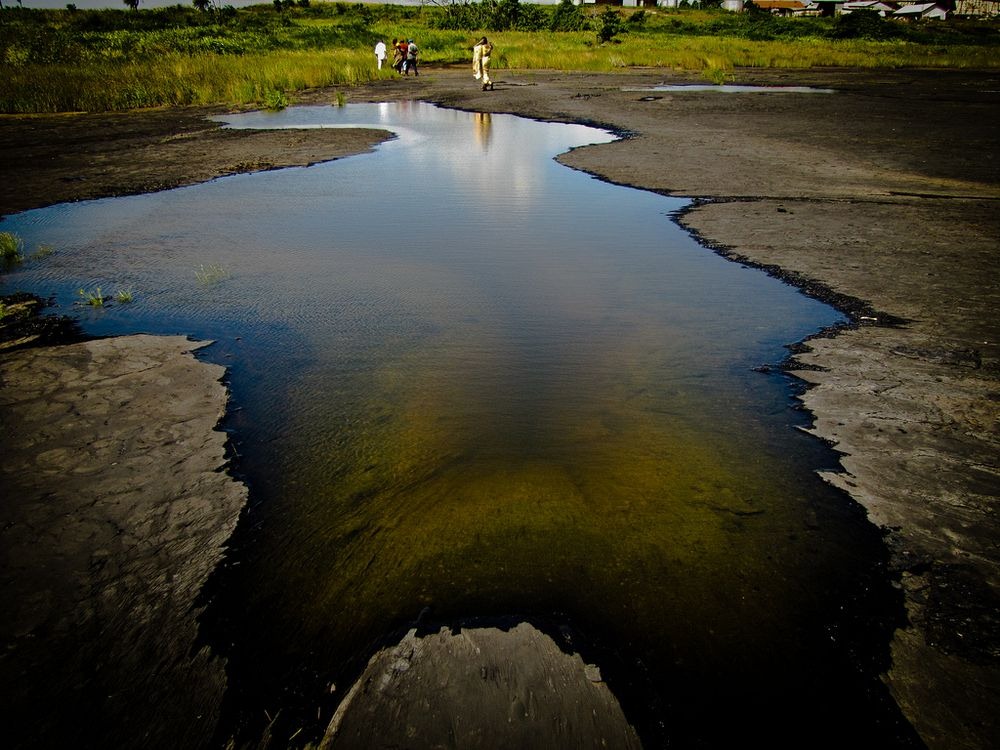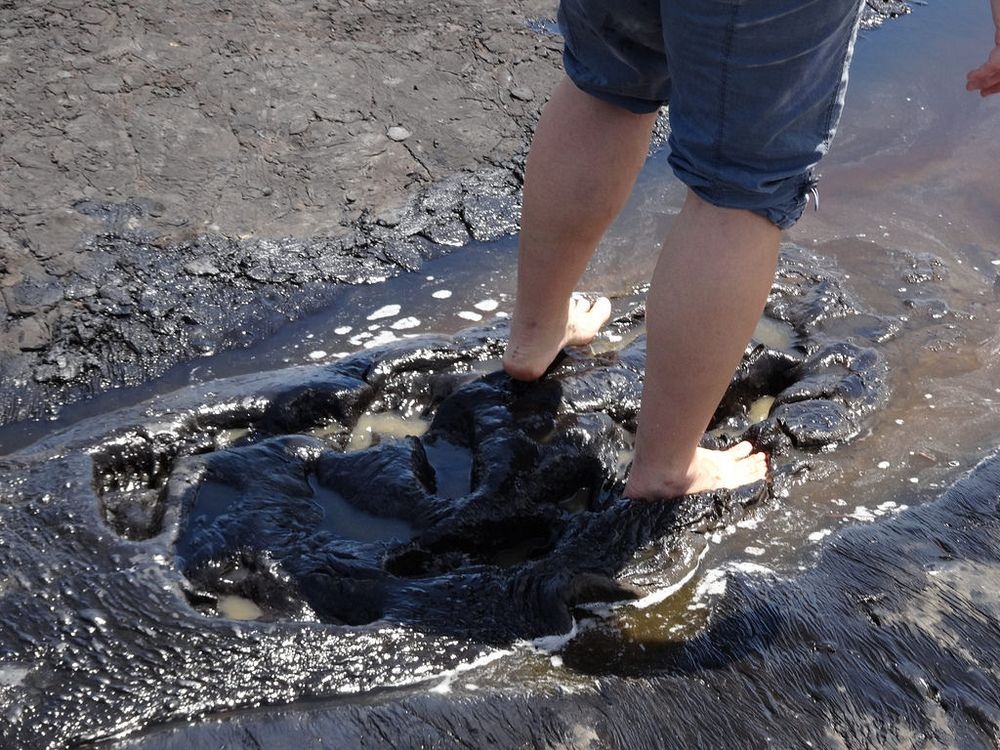Some of the world’s strangest lakes are filled not with water but with asphalt, also known bitumen, the same material that roads are paved with.
The great majority of asphalt that is used today is derived from petroleum, but asphalt is also found in concentrated form in nature. Sometimes they seep from the ground and create large puddles known as tar pits or asphalt lakes. At other times, they are found soaked in sands, as in Athabasca oil sands in northeastern Alberta, Canada, which is the world’s largest deposit of natural bitumen. Asphalt is also known to erupt in underwater volcanoes, but these are relatively rare and were discovered only in 2003.

La Brea Tar Pits in Los Angles. Photo credit: Betsy Weber/Flickr
There are only a few known large asphalt lakes around the world. The largest of these is located in the village of La Brea in southwest Trinidad, and is called the Pitch Lake. The lake covers about 40 hectares and is reported to be 75 meters deep. The liquid asphalt is so thick and viscous, that the surface can be walked upon. But if you stand on the surface for too long, you will slowly sink into it. Although the lake appears quiescent the asphalt is slowly moving and you can see flow lines on the surface. As the tar moves, sometimes prehistoric trees and other objects that had fallen into the lake appears, then disappears and then reappears again.
The lake was created thousands of years ago by the process of subduction when the Caribbean continental plate was forced under another plate. This opened fault lines that allowed crude oil from deep underground deposits to rise to the surface, where it collected in a volcanic crater. The air caused lighter elements of the oil to evaporate, leaving behind the heavy asphalt, a mix of oil, clay and water.
The lake was discovered in 1595, and has been commercially mined since 1867. An estimated 10 million tons of asphalt has been extracted from the Pitch Lake so far. About 6 million tons of asphalt is still left.
The La Brea Pitch Lake is also a tourist attraction and brings about 20,000 visitors annually. Sometimes people swim in the waters of the pitch lake because they believe it has therapeutic properties.

Pitch Lake in Trinidad. Photo credit: r.lt/Flickr
Another famous asphalt lake is located in urban Los Angeles. It’s actually a group of pits called the La Brea Tar Pits. Don’t be confused by the name. “Brea” is just a Spanish word for asphalt. There are other tar pits in southern California such as the McKittrick Tar Pits in Kern County and Carpinteria Tar Pits in Santa Barbara County. Elsewhere, there is Lake Bermudez, in Venezuela, which is the world's second largest natural tar pit. Tar pits have also been found in Iraq and in Baku, Azerbaijan.
In addition to geologists and oil barons, asphalt lakes are objects of interest for naturalists and paleontologists too as well, because hidden beneath the sticky, gooey layers are remains of unimaginable amount of prehistoric life. Over thousands of years these lakes have swallowed saber-toothed cat, dire wolves, bison, horses, turtles, snails, clams, millipedes, gophers, mammoths and hundreds of other species of vertebrates and invertebrates. These animals had wandered too far looking for food perhaps, and became trapped in the asphalt. The trapped animals attracted predators who became stuck as well as. Death came either by suffocation or hunger. It’s a terrible way to die, but a fantastic way to preserve fossils.
A surprisingly large percentage of fossils recovered from tar pits — as high as 90 percent—are that of predators. The most common large mammal recovered from La Brea pits, also known as Rancho La Brea, is the dire wolf with more than 4,000 specimens, followed by saber-toothed cats with over 2,000 individuals. Coyotes rank third. Even most of the bird fossils are predators or scavengers, such as vultures, condors, eagles, and giant, extinct, storklike birds known as teratorns.

Photo credit: Kimon Berlin/Flickr
Aside from animals, tar pits have also preserved prehistoric wood and vegetation. But the most unexpected find is that of a woman, dated at approximately 10,000 years. The skeleton was accompanied by the remains of a domestic dog. Researchers believe the death might have been ceremonial or a sacrifice, just like sacrifices made in peat bogs.
Originally, the bones recovered from the pits were dismissed as recent deaths. It was not until 1901 when a geologist visited the tar pits and identified the bones belonging to many extinct species that the scientific community began to take notice. Between 1905 and 1913 amateur fossil hunters took away millions of bones from the pits before the landowner, George Alan Hancock, fearing the fossils would be lost for ever, put an end to it. He then granted exclusive rights to excavate the fossils to the Los Angeles Natural History Museum, but only for two years. Between 1913 and 1915, the museum collected about a million bones. Hancock later donated the pits to the county, on the condition that they be preserved and appropriately displayed. Some of the fossil specimens are now displayed at the nearby George Alan Hancock Museum.
There is still at least one actively excavated pit in Rancho La Brea.

Photo credit: Shriram Rajagopalan/Flickr

Photo credit: Mandy/Flickr

A detail from the frieze above the front entrance to the Page Museum at the La Brea Tar Pits. Photo credit: John Fladd/Flickr

Skeleton of an ice age bison recovered from La Brea tar pits. Photo credit: Pauleon Tan/Flickr

Skeleton of a mammoth recovered from La Brea tar pits. Photo credit: Roni/Flickr

Mining operations Pitch Lake Trinidad. Photo credit: Mandy/Flickr



Comments
Post a Comment